Botanical illustration: Sedges Workshop

In my career as a botanical illustrator, I sometimes come across whole groups of plants or animals that I know very little about. The sedges fall into this category, a fact which became increasingly clear to me as I completed a whole swathe of these plants for the Field Studies Council’s leaflets.
I managed to complete the illustrations, although I found it tricky, but I decided then and there to back up this initial trial by fire by doing my best to learn a bit about these pretty plants.
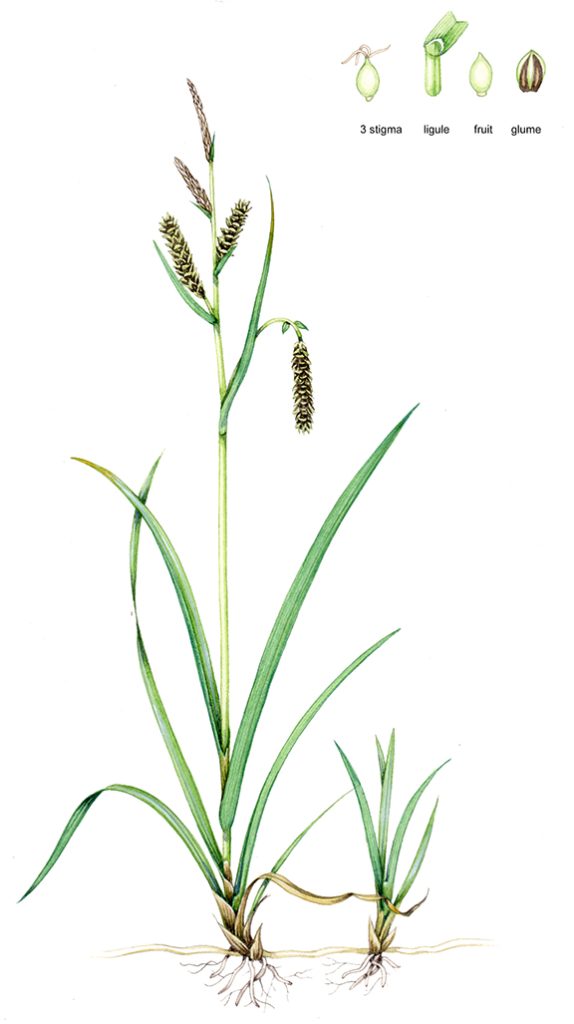
Glaucous sedge Carex flacca
Sedge identification course
Luckily, FSC has lots of diverse and fascinating courses on offer. These included a one-day session learning about sedges. (For more on another of these brilliant courses I attended earlier this year, please look at my blog on Learning about Slugs).
Our tutor was Mark Duffell. It turns out he was the same long-suffering botanist who’d advised me and helped me illustrate the sedges for the leaflets! He was polite enough not to run screaming from the classroom. Mark was an excellent guide to the world of rushes, grasses, and sedges.
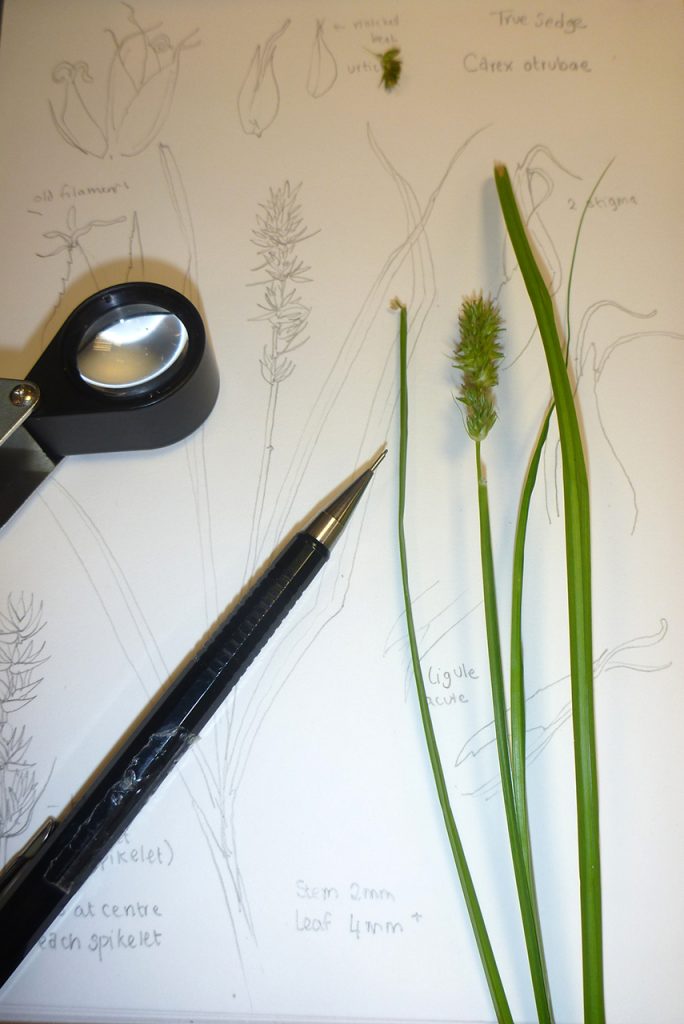
Sketchbook illustration of Carex otrubae with hand lens and specimen of plant
The uses of sedges
We began by listing the uses of these plants. Next we learnt something of the main differences in anatomy between grasses, rushes and sedges. There’s a handy rhyme here, pertaining to their stems: “Sedges have edges, rushes are round, grasses have knees and are hollow down to the ground”. Then, with the help of Sedges of the British Isles by Jermy, we started keying out a plethora of sedge specimens he’d brought in.
Keying out specimens
I have a habit of not working through keys. I tend to rush to the pictures and try and match my plant to them; but this session changed my approach. In fact I was elated to key out six or seven sedges correctly.

Sketchbook study of Carex demissa
One of the main distinguishing features of sedges is their stems. These are solid (not hollow) and mostly triangular. They have ligules, like grasses. But these little flaps on each leaf near the stem tend to be firmly flattened to the leaf blade. In grasses these are like collars extending from the leaves around the stem. Sedges tend to grow in tufts or along runners of rhizomes. Figuring out which growth habit your specimen has is vital.

Sketchbook study of Carex sylvatica Wood sedge
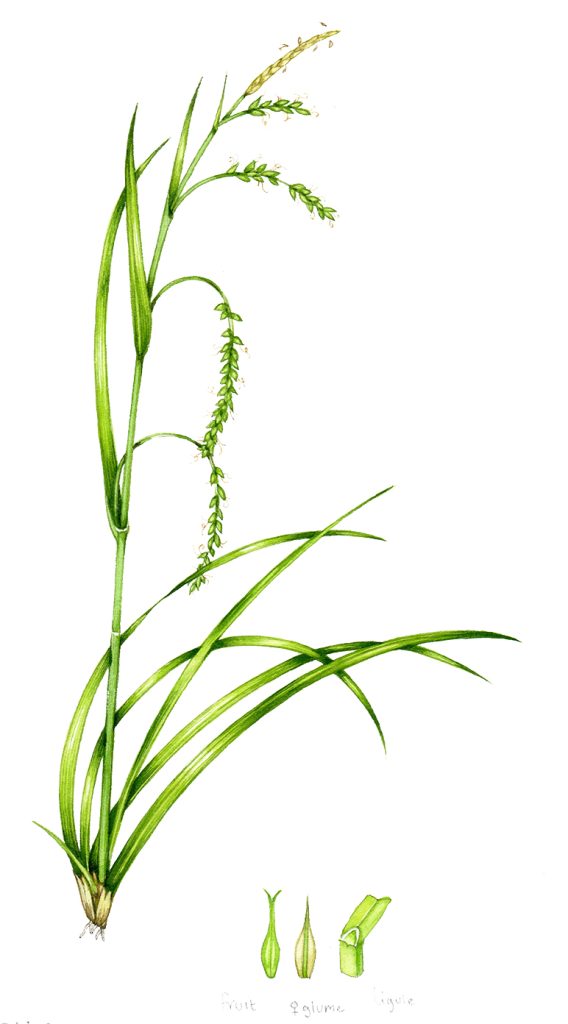
Finished illustration of Wood sedge Carex sylvatica
Sedge structures useful for identification
The reproductive region of the sedge, or flower, is called a spikelet. It has all sorts of sedge-specific characteristics. One of the vital structures to get your head around is the utricle. This is the female flower part which mostly surrounds the nut. These utricles vary in size, colour, texture, and shape. This was really clear from our observations. Some have little beaks at their tips, some are shiny and green, others black and textured like suede. Some have papery wings on their edges whilst others do not.
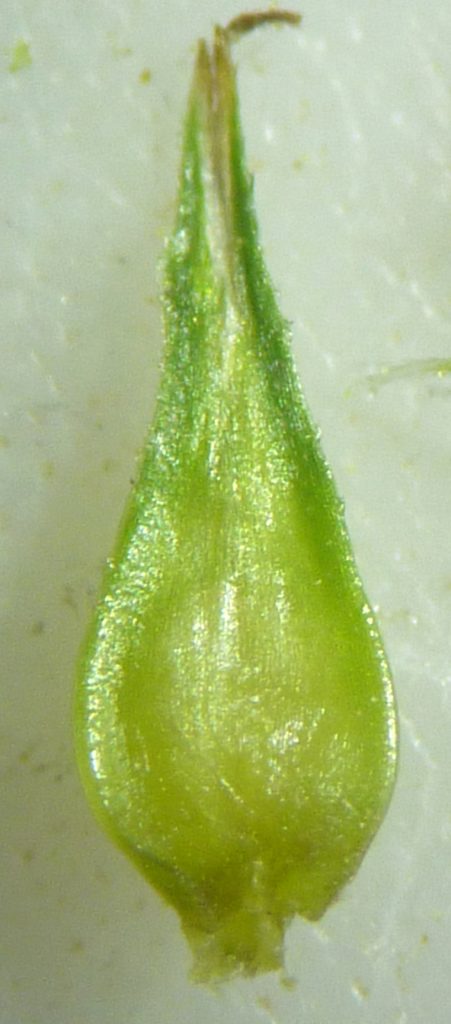
Carex otrubae utricle (photo taken through the dissecting microscope)
A big indicator of species with the sedges is the number of stigmas the female flower produces; it’s either 2 or 3. Mark told us a cunning trick to tell this when the stigmas had fallen off post flowering, generally the rounder and less flattened the utricle, the more likely it is to have three not two stigmas.
Another crucial structure is the glume, which surrounds male and female flowers and is papery thin, varying in shape and colour from species to species. The details I tried to include in each of my sketchbook studies were therefore the ligule, the utricle, details of stigma number, and the glume.
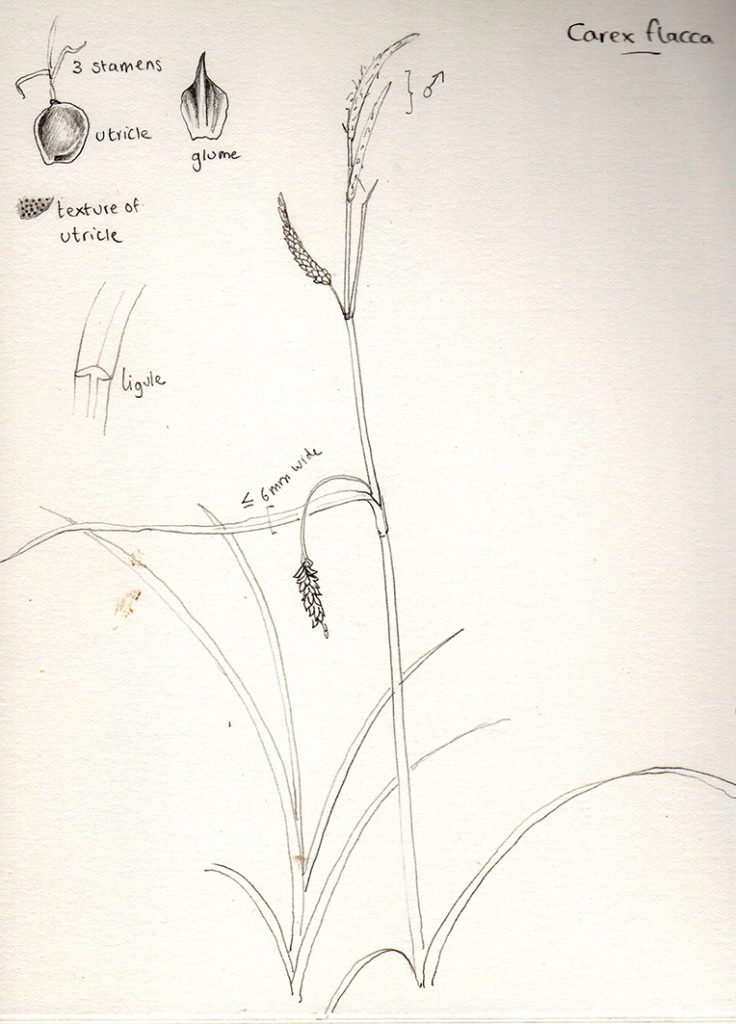
Sketchbook study of Carex flacca
Sedge variety
It was remarkable how very different these plants looked, it was only on close examination that you could be sure they were all sedges.
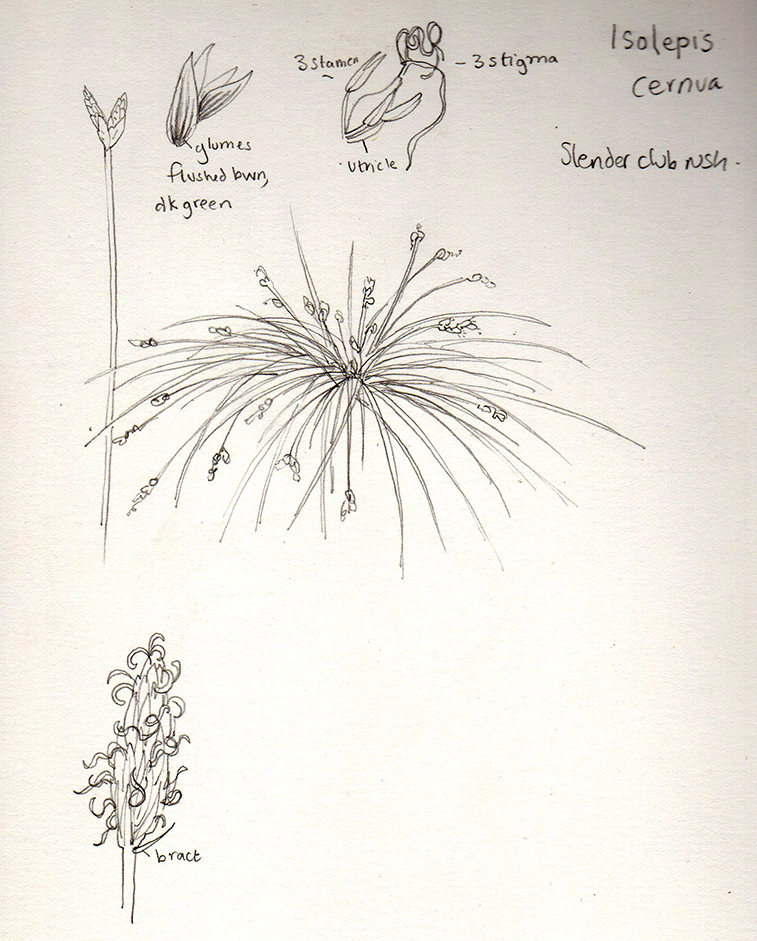
Sketchbook study of Isolepis cernua
Mark did a great job with his specimens and brought in some spike rushes (a sedge, but slightly different to the large Carex group, see the sketch above), and pointed out that cotton-grass are also sedges.

Another Spike rush species, the Few flowered Spike rush Eleocharis quinqueflora
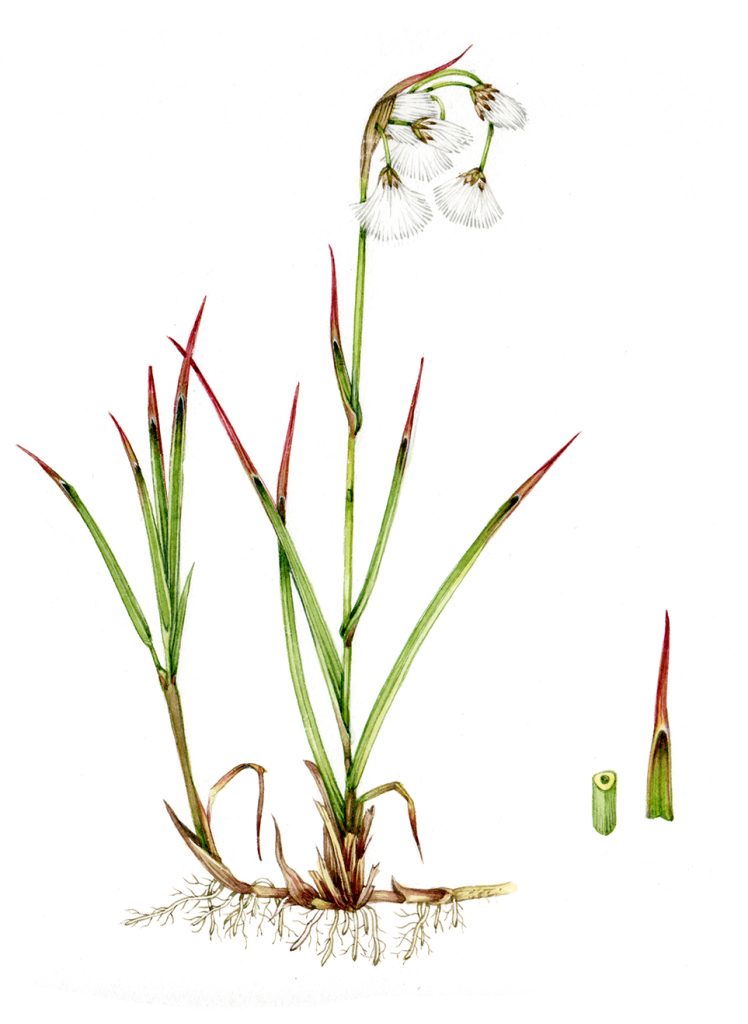
Common Cottongrass Eriophorum angustifolium
By the end of the day I felt really happy using the sedges key (taken from the Sedges book by Jermy), and far more comfortable working and looking at the defining features of the sedge family. Next time I get asked to draw sedges, I’ll have some hope of doing these fabulous plants justice!
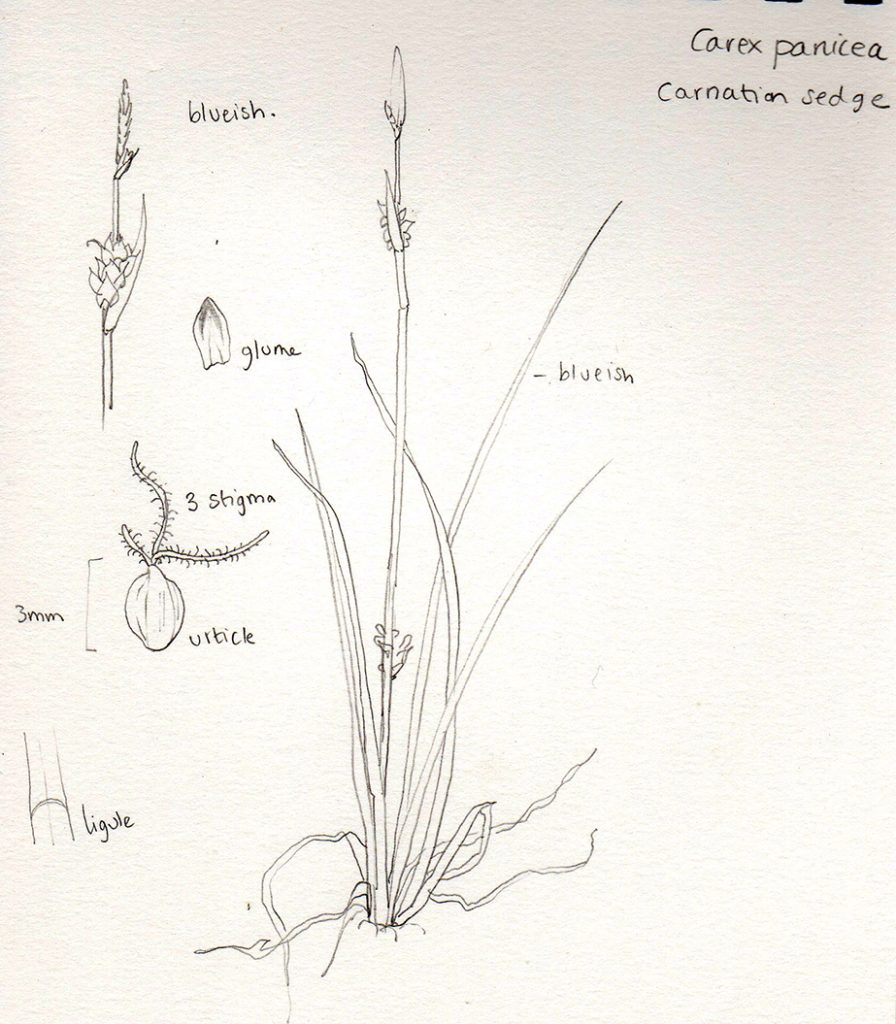
Sketchbook study of Carnation sedge Carex panicea
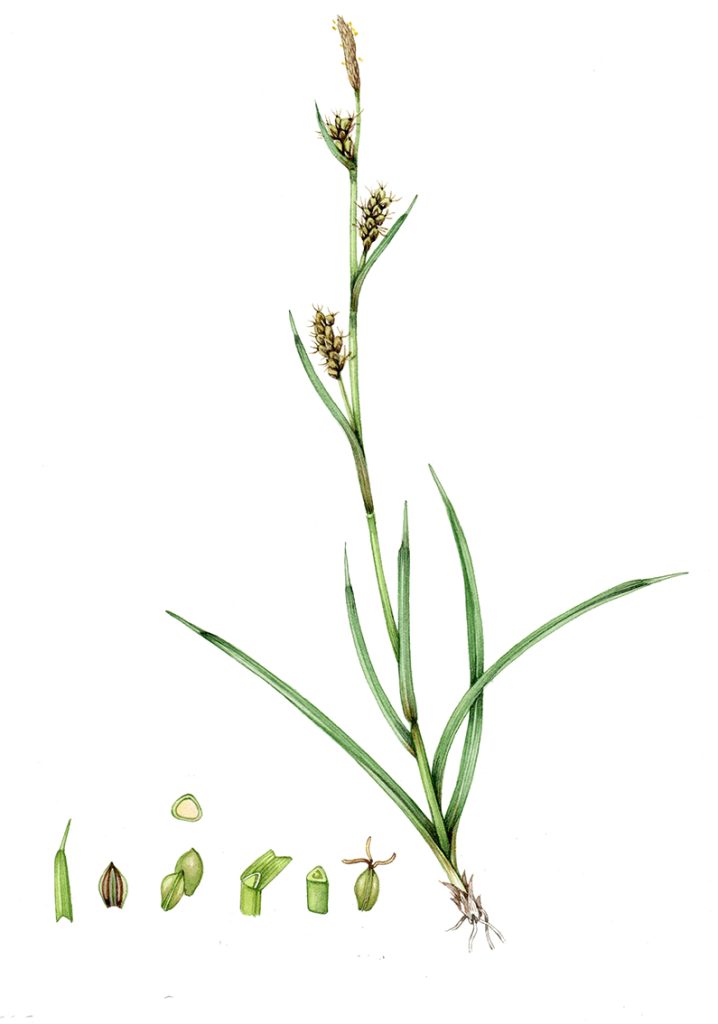
Carnation sedge Carex panicea from the FSC Heathlands leaflet

